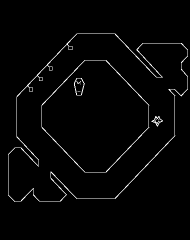Post by woodentulip on Dec 24, 2012 11:28:01 GMT -5
Happy Holidays.
After getting my RPI from Newark/Element14/Farnell; I have had some great fun getting the BBC Model B emulator up-and-running; and getting a copy of Elite working on it to take me back to 1986 when a friend of mine brought over his UK Television / BBC_B micro and assorted software when he emigrated to Canada with his family.
Good Memories...
He was astounded to find that I could get my hands on a US - UK power converter that didn't suck-eggs; and he could have fun converting some of his student documents over to computers usable in Canada. (TRS-80 M3 Coco) And after making an RS-232 cable that also did not suck; he found to his delight that he could print, save, transfer and get his homework from friends overseas and could use it for school in Canada.
Being a "Timex" lad, I knew how to both get UK-Mains computers / TV's working in North America, for Sinclair Spectrums, as well as knowing both Parallel and Serial I/O for same.
And now to the topic at hand.
Vectrex on the Raspberry Pi.
With RISC_OS being the best OS on the RPI (IMHO) as oppsed to the "Wheezy" debian build and such, I was really thinking to build this as a "Vectrex" EMU runtime; with some added features, like FATfs access, and USB access for same (SD-Card as well, but getting data to/from it I would prefer using the USB. -- Less Wear and Tear.)
This has two advantages:
1 - Portrait mode for a DVI / HDMI connected monitor / display.
2 - Audio is either HDMI, or 1/8-inch phono.
The Graphics would likely be runtime SDL I guess. (OpenGL / cGL might be a second option) But like the VectRegen on iOS Audio would be an interesting. (I'm not interested in a regen of the "buzz" really; for those who know it corresponds to the video display list for effect would find the VectRegen version really annoying.)
One option I am also looking at -- is using a Laser-Mirror driver rather than the HDMI, this may have to be done via the breakout cabling and would need custom support to control, but Laser-Based vector display would allow a scalable method of vector display as opposed to using Vector->Raster conversion.
Thoughts?
-sean
After getting my RPI from Newark/Element14/Farnell; I have had some great fun getting the BBC Model B emulator up-and-running; and getting a copy of Elite working on it to take me back to 1986 when a friend of mine brought over his UK Television / BBC_B micro and assorted software when he emigrated to Canada with his family.
Good Memories...
He was astounded to find that I could get my hands on a US - UK power converter that didn't suck-eggs; and he could have fun converting some of his student documents over to computers usable in Canada. (TRS-80 M3 Coco) And after making an RS-232 cable that also did not suck; he found to his delight that he could print, save, transfer and get his homework from friends overseas and could use it for school in Canada.
Being a "Timex" lad, I knew how to both get UK-Mains computers / TV's working in North America, for Sinclair Spectrums, as well as knowing both Parallel and Serial I/O for same.
And now to the topic at hand.
Vectrex on the Raspberry Pi.
With RISC_OS being the best OS on the RPI (IMHO) as oppsed to the "Wheezy" debian build and such, I was really thinking to build this as a "Vectrex" EMU runtime; with some added features, like FATfs access, and USB access for same (SD-Card as well, but getting data to/from it I would prefer using the USB. -- Less Wear and Tear.)
This has two advantages:
1 - Portrait mode for a DVI / HDMI connected monitor / display.
2 - Audio is either HDMI, or 1/8-inch phono.
The Graphics would likely be runtime SDL I guess. (OpenGL / cGL might be a second option) But like the VectRegen on iOS Audio would be an interesting. (I'm not interested in a regen of the "buzz" really; for those who know it corresponds to the video display list for effect would find the VectRegen version really annoying.)
One option I am also looking at -- is using a Laser-Mirror driver rather than the HDMI, this may have to be done via the breakout cabling and would need custom support to control, but Laser-Based vector display would allow a scalable method of vector display as opposed to using Vector->Raster conversion.
Thoughts?
-sean




